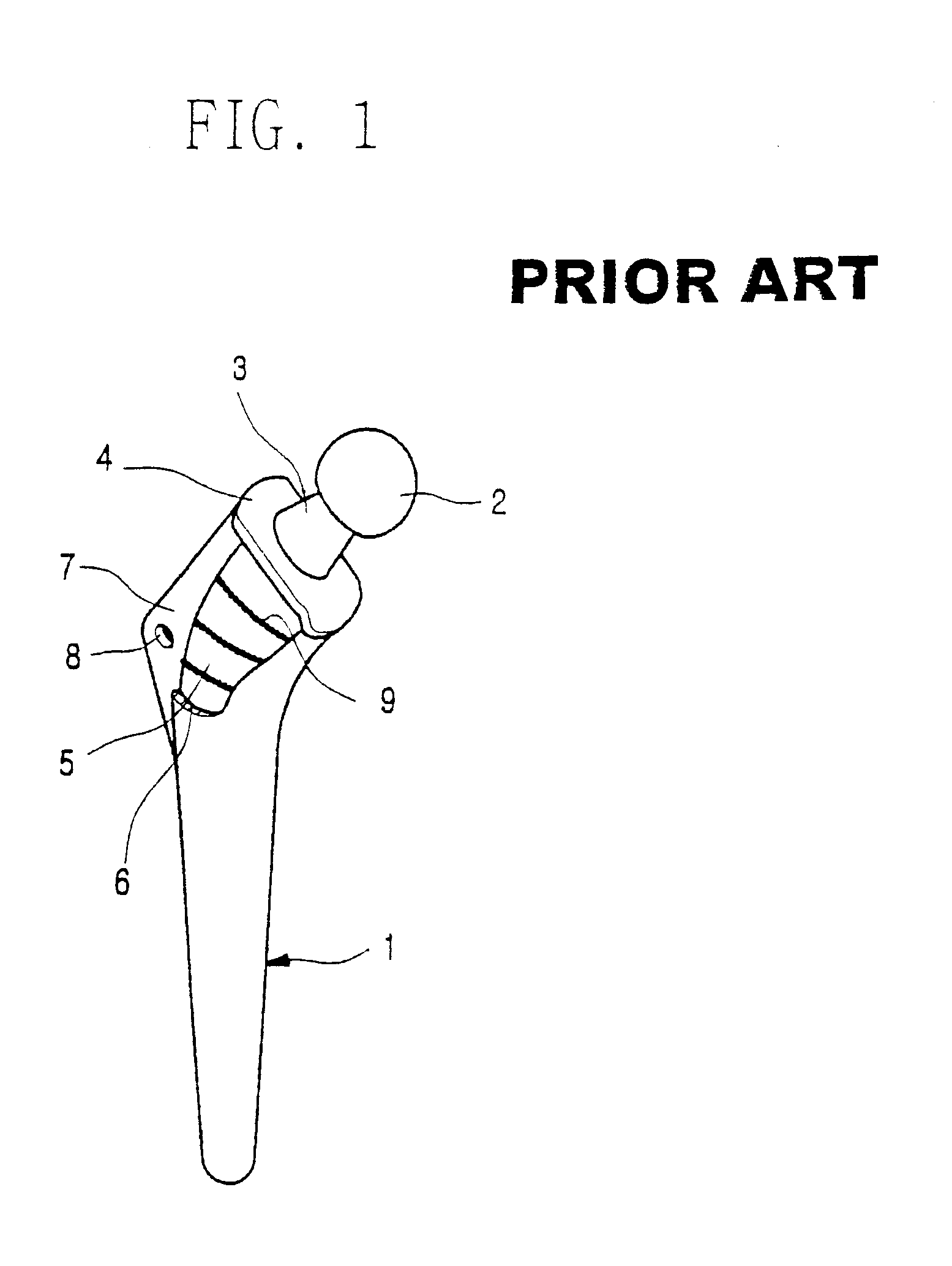Cement jacket for a cemented artificial joint stem and artificial joint having the cement jacket
a cemented artificial joint and cement jacket technology, applied in the direction of shoulder joints, prostheses, osteosynthesis devices, etc., can solve the problems of accelerating bone osteolysis, gap between the femur and the stem, and serious drawbacks
- Summary
- Abstract
- Description
- Claims
- Application Information
AI Technical Summary
Benefits of technology
Problems solved by technology
Method used
Image
Examples
Embodiment Construction
A preferred embodiment of a cement jacket for a cemented artificial joint stem and an artificial joint equipped with that cemented jacket will be described in detail below by referring to accompanying drawings.
As can be seen in FIGS. 2 to 4, the cement jacket 10 for cemented artificial joint stem according to a preferred embodiment of the invention is in the form adapted for enclosing the stem when the stem is inserted, or in the form of a bag, preferably with tight fit between the jacket and the stem, so that small vertical sliding movement of the stem may be allowed while lateral motion of the stem within the jacket 10 is prevented.
The cement jacket 10 is formed a little longer than the stem so that a predetermined space between the lower end of the stem and the lower end of the jacket remains to prevent the lower tip of the stem from touching the lower end of the jacket when the tip is placed in the jacket. The formation of such a prescribed space is to prevent a damage on the ce...
PUM
| Property | Measurement | Unit |
|---|---|---|
| resistance | aaaaa | aaaaa |
| adhesive strength | aaaaa | aaaaa |
| physical binding strength | aaaaa | aaaaa |
Abstract
Description
Claims
Application Information
 Login to View More
Login to View More - R&D
- Intellectual Property
- Life Sciences
- Materials
- Tech Scout
- Unparalleled Data Quality
- Higher Quality Content
- 60% Fewer Hallucinations
Browse by: Latest US Patents, China's latest patents, Technical Efficacy Thesaurus, Application Domain, Technology Topic, Popular Technical Reports.
© 2025 PatSnap. All rights reserved.Legal|Privacy policy|Modern Slavery Act Transparency Statement|Sitemap|About US| Contact US: help@patsnap.com



